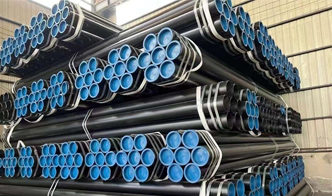-
Cangzhou Yulong Steel Co., Ltd.
-
Phone:
+86 13303177267 -
Email:
admin@ylsteelfittings.com
- English
- Arabic
- Italian
- Spanish
- Portuguese
- German
- kazakh
- Persian
- Greek
- French
- Russian
- Polish
- Thai
- Indonesian
- Vietnamese
- Zulu
- Korean
- Uzbek
- Hindi
- Serbian
- Malay
- Ukrainian
- Gujarati
- Haitian Creole
- hausa
- hawaiian
- Hebrew
- Miao
- Hungarian
- Icelandic
- igbo
- irish
- Japanese
- Javanese
- Kannada
- Khmer
- Rwandese
- Afrikaans
- Albanian
- Amharic
- Armenian
- Azerbaijani
- Basque
- Belarusian
- Bengali
- Bosnian
- Bulgarian
- Catalan
- Cebuano
- China
- China (Taiwan)
- Corsican
- Croatian
- Czech
- Danish
- Esperanto
- Estonian
- Finnish
- Frisian
- Galician
- Georgian
- Kurdish
- Kyrgyz
- Lao
- Latin
- Latvian
- Lithuanian
- Luxembourgish
- Macedonian
- Malgashi
- Malayalam
- Maltese
- Maori
- Marathi
- Mongolian
- Myanmar
- Nepali
- Norwegian
- Norwegian
- Occitan
- Pashto
- Dutch
- Punjabi
- Romanian
- Samoan
- Scottish Gaelic
- Sesotho
- Shona
- Sindhi
- Sinhala
- Slovak
- Slovenian
- Somali
- Sundanese
- Swahili
- Swedish
- Tagalog
- Tajik
- Tamil
- Tatar
- Telugu
- Turkish
- Turkmen
- Urdu
- Uighur
- Welsh
- Bantu
- Yiddish
- Yoruba

Dec . 04, 2024 21:25 Back to list
flange bs4504
Understanding Flanges and BS 4504 Standards
Flanges are vital components used in various engineering applications, especially in piping systems. They serve as connectors among pipes, valves, and other equipment, allowing for easy assembly and disassembly for maintenance. Among the various standards governing flange designs, the British Standard 4504 (BS 4504) is a widely recognized specification. This article delves into the significance of flanges under BS 4504, their types, applications, and benefits.
What is BS 4504?
The BS 4504 standard pertains to flanges and their associated materials, dimensions, and performance. Established by the British Standards Institution (BSI), it provides a framework for the design and manufacturing of flanges used in pressure piping systems. The standard aims to ensure safety, reliability, and efficiency in systems that operate under various pressure and temperature conditions.
BS 4504 covers several aspects, including
- Materials The standard specifies suitable materials for different types of flanges, ensuring they can withstand various operational environments such as high pressure, high temperature, and corrosive conditions.
- Dimensions It provides detailed dimensional specifications that ensure compatibility and interchangeability among different flange types and sizes. This is crucial in preventing leakage and ensuring proper sealing in piping systems.
- Testing and Quality BS 4504 outlines testing methods to verify the integrity and performance of flanges, ensuring that they meet safety standards.
Types of Flanges Under BS 4504
BS 4504 includes several types of flanges, categorized based on their design, applications, and the pressure levels they are designed to withstand. Here are some of the common types
1. Weld Neck Flanges These flanges are designed for high-pressure applications. The neck of the flange provides a gradual transition to the pipe, which helps distribute stress and minimize the risk of failure at welded joints.
2. Slip-On Flanges These flanges are easier to install as they slide over the pipe and are then welded in place. They are commonly used in lower-pressure applications.
3. Blind Flanges As the name suggests, these flanges do not have a central opening. They are used to seal the ends of piping systems, providing access for maintenance or inspection when needed.
flange bs4504

4. Socket Weld Flanges These are designed for small-diameter piping systems and involve inserting the pipe into the flange before welding.
5. Lap Joint Flanges Typically used with a stub end, these flanges allow for easy disassembly and are often used in applications where frequent maintenance is required.
Applications of BS 4504 Flanges
Flanges that comply with BS 4504 are widely used in various industries, including
- Oil and Gas For connecting pipes, valves, and flanges in high-pressure applications.
- Chemical Processing In environments with corrosive substances, the correct selection of flange material per BS 4504 ensures longevity and safety.
- Water Treatment Used in various processes, including the treatment and distribution of water.
- Power Generation Flanges are essential components in steam and gas turbines and other energy generation systems.
Benefits of Using BS 4504 Compliant Flanges
1. Interchangeability The adherence to standardized dimensions ensures that flanges can be easily replaced or interchanged, reducing downtime during repairs.
2. Safety and Reliability Compliance with BS 4504 standards guarantees that flanges are tested for quality and performance, ensuring they can withstand operational stresses without failure.
3. Cost-effectiveness By using standardized components, companies can save on manufacturing and inventory costs, while also benefiting from reduced construction time due to the ease of assembly.
In conclusion, flanges under the BS 4504 standard play a crucial role in various piping systems across multiple industries. Understanding their specifications, types, and applications allows for enhanced safety, reliability, and efficiency in engineering systems. Adopting these standards not only ensures compliance with safety regulations but also promotes optimal performance in demanding operational environments.
Latest news
-
ANSI 150P SS304 SO FLANGE
NewsFeb.14,2025
-
ASTM A333GR6 STEEL PIPE
NewsJan.20,2025
-
ANSI B16.5 WELDING NECK FLANGE
NewsJan.15,2026
-
ANSI B16.5 SLIP-ON FLANGE
NewsApr.19,2024
-
SABS 1123 FLANGE
NewsJan.15,2025
-
DIN86044 PLATE FLANGE
NewsApr.19,2024
-
DIN2527 BLIND FLANGE
NewsApr.12,2024
-
JIS B2311 Butt-Welding Fittings LR/SR 45°/90° /180°Seamless/Weld
NewsApr.23,2024











